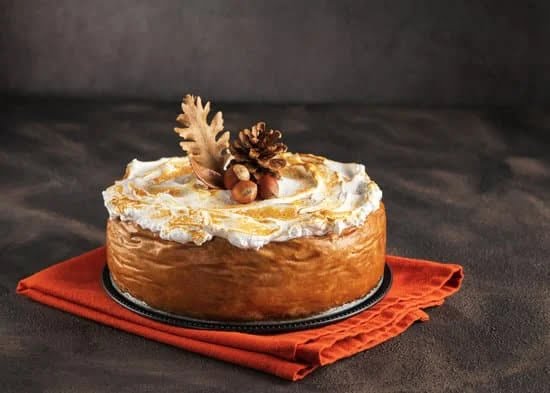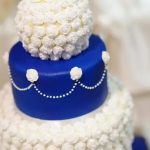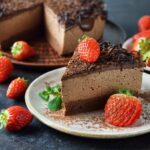Are you looking for a light and fluffy frosting to take your cake decorating to the next level? Look no further than whipped cream frosting for cake decorating. This versatile and delicious frosting is perfect for adding a touch of sweetness and elegance to any baked creation. Whether you’re a seasoned baker or just starting out, whipped cream frosting is an excellent choice for all kinds of cakes and desserts.
Whipped cream frosting has been a beloved staple in the world of cake decorating for generations. Its origins can be traced back to ancient Europe, where it was originally used as a topping for various pastries and desserts. Over time, bakers have perfected the art of whipping cream into a smooth and airy texture, making it an essential component in creating beautiful and delectable cakes.
The benefits of using whipped cream frosting for cake decorating are numerous. Not only does it provide a luscious and creamy texture, but it also offers a light and airy consistency that pairs perfectly with most cake flavors. Additionally, its versatility allows for easy customization with different flavors and colors, making it an ideal option for any type of celebration or occasion.
In this article, we will explore the history, variations, tips, tricks, best practices, troubleshooting common issues, and creative ideas for using whipped cream frosting in cake decorating. Whether you’re an experienced baker or just starting out on your baking journey, there’s something for everyone to learn about this delightful frosting option.
History and Origins of Whipped Cream Frosting
Whipped Cream Frosting for Cake Decorating has a rich history that dates back centuries. The origins of this light and airy frosting can be traced back to Europe, where it was initially used as a topping for various desserts. The first mention of whipped cream frosting can be found in French and Italian cookbooks from the 16th century, where it was used to decorate pastries and cakes served at royal banquets and noble households.
The technique of whipping cream to create a fluffy and smooth texture quickly gained popularity across Europe and eventually made its way to the United States. In the late 19th century, with the invention of hand-cranked mixers, whipped cream frosting became more accessible to home bakers and gained widespread popularity as a versatile cake decorating option.
One of the key benefits of using whipped cream frosting for cake decorating is its light and airy texture, which adds a delicate touch to any dessert. Unlike buttercream or fondant, whipped cream frosting has a fresher taste and is not overly sweet, making it an ideal choice for those who prefer a lighter alternative.
Additionally, whipped cream frosting is incredibly versatile and can be flavored in numerous ways, such as chocolate, vanilla, strawberry, or coffee, allowing for endless creative possibilities in cake decorating.
| Benefits | Data |
|---|---|
| Light Texture | Delicate touch to any dessert |
| Versatility | Can be flavored in numerous ways |
The Benefits of Using Whipped Cream Frosting for Cake Decorating
Whipped cream frosting is a popular choice for cake decorating due to its light and airy texture, making it perfect for creating beautifully textured designs on cakes. One of the main benefits of using whipped cream frosting is that it is not as sweet or heavy as buttercream or other types of frosting, making it a great option for those who prefer a lighter dessert.
Another advantage of whipped cream frosting is its versatility. It can easily be flavored with different extracts, fruits, or chocolate to create a variety of flavors such as vanilla, strawberry, chocolate, and more. This makes it an ideal option for decorating different types of cakes and catering to various tastes.
Furthermore, whipped cream frosting is relatively easy to work with when it comes to cake decorating. It can be piped into intricate designs and borders with ease, allowing bakers and decorators to get creative with their cake presentations. Its smooth and creamy texture also makes it a great option for filling cake layers, adding another layer of flavor and moisture to the cake.
Finally, one of the biggest advantages of using whipped cream frosting for cake decorating is that it is perishable and needs refrigeration. This means that the frosting does not contain preservatives or artificial ingredients, appealing to those looking for a more natural option for their cakes. However, this also means that decorated cakes should be kept refrigerated until serving time.
| Benefits | Description |
|---|---|
| Light and Airy Texture | Perfect for creating beautiful textured designs on cakes. |
| Versatility | Can be flavored with different extracts and fruits to create various flavors. |
| Refrigeration Requirement | Frosting does not contain preservatives or artificial ingredients. |
Tips and Tricks for Making the Perfect Whipped Cream Frosting
The key to making the perfect whipped cream frosting for cake decorating lies in achieving the right consistency and stability. Here are some essential tips and tricks to ensure that your whipped cream frosting turns out just the way you want it.
Use Cold Cream and Equipment
One of the most important factors in making whipped cream frosting is to start with cold heavy cream and a cold bowl and beaters. This helps the cream whip up faster and hold its shape better. It’s also crucial to ensure that there is no moisture present, as even a tiny amount can prevent the cream from whipping properly.
Add Sweetener and Flavorings Gradually
When sweetening your whipped cream frosting, it’s best to add the sugar or other sweeteners gradually while whipping the cream. This ensures that the sugar fully dissolves and doesn’t create a grainy texture in the finished frosting. Additionally, if you’re adding flavorings such as vanilla extract or fruit puree, be sure to do so slowly to avoid deflating the whipped cream.
Stabilize Your Whipped Cream Frosting
To ensure that your whipped cream frosting holds its shape, consider stabilizing it with gelatin, cornstarch, or powdered sugar. Stabilizing agents help prevent the frosting from deflating or weeping, particularly if you plan to use it for decorating purposes. This is especially important if you need your decorated cake to sit out at room temperature for an extended period of time.
With these tips and tricks in mind, you’ll be well on your way to creating perfect whipped cream frosting for all your cake decorating needs. Whether you’re a novice baker or an experienced pastry chef, mastering the art of whipped cream frosting will elevate your cakes to new heights of deliciousness and visual appeal.
Different Variations of Whipped Cream Frosting (Chocolate, Vanilla, Strawberry, Etc)
When it comes to whipped cream frosting for cake decorating, there are endless possibilities for flavor variations. Whether you’re a fan of classic flavors like vanilla and chocolate or want to add a fruity twist with strawberry or other fruits, the options are truly limitless. Each flavor variation offers a unique and delicious addition to your cakes, making them even more irresistible.
Chocolate Whipped Cream Frosting
For chocolate lovers, chocolate whipped cream frosting is an absolute must-try. The rich and decadent flavor of cocoa combined with the light and airy texture of whipped cream creates a heavenly combination. It’s perfect for a wide range of cakes, from simple chocolate sponges to more elaborate creations.
Vanilla Whipped Cream Frosting
If you prefer a more subtle flavor, vanilla whipped cream frosting is always a crowd-pleaser. The delicate aroma and taste of vanilla complement the sweetness of the whipped cream, adding a touch of elegance to any cake. It pairs well with various cake flavors and is versatile enough for any occasion.
Strawberry Whipped Cream Frosting
For something refreshing and fruity, strawberry whipped cream frosting is a fantastic choice. The natural sweetness and vibrant color of fresh strawberries bring a burst of flavor to the lightness of the whipped cream. It’s particularly delightful on summer-themed or celebratory cakes.
Each variation can be easily customized by adjusting the amount of flavoring added, allowing you to achieve your desired taste intensity. Be sure to consider the color impact on your cake as well as each variation has its own distinct visual appeal that will enhance your cake decorating creations.
Best Practices for Decorating Cakes With Whipped Cream Frosting
When it comes to decorating cakes with whipped cream frosting, there are several best practices to keep in mind in order to achieve a professional and polished result. One of the key things to remember is to ensure that the cake is completely cooled before applying the whipped cream frosting. This will prevent the frosting from melting or becoming runny, which can result in a messy appearance.
Another important factor to consider is the consistency of the whipped cream frosting. It is essential that the frosting is stiff enough to hold its shape when piped onto the cake, but still light and airy in texture. To achieve this balance, it is recommended to whip the cream just until stiff peaks form, being careful not to over-whip as this can cause the frosting to become too dense.
In addition, it is crucial to use a piping bag and decorator tips for applying whipped cream frosting in order to create beautiful and intricate designs on the cake. The right tools can make all the difference in achieving a professional-looking finish. Whether you are creating rosettes, borders, or other decorative elements, having the proper equipment will greatly enhance your cake decorating experience using whipped cream frosting for cake decorating.
Troubleshooting Common Issues With Whipped Cream Frosting
When decorating cakes with whipped cream frosting, it is important to be aware of the common issues that may arise. Here are some troubleshooting tips to help you overcome these challenges:
1. Overbeating: One common issue when making whipped cream frosting is overbeating, which can result in a grainy and curdled texture. To avoid this, be sure to beat the cream just until stiff peaks form, and stop immediately to prevent overmixing.
2. Melting: Whipped cream frosting has a tendency to melt in warm temperatures, especially if it is over-whipped or if the cake is left out at room temperature for too long. To prevent this issue, it is best to refrigerate the frosted cake until just before serving, especially on hot days.
3. Stabilizing: Another common problem with whipped cream frosting is its tendency to deflate and lose its shape over time. To combat this issue, consider using gelatin or cornstarch as stabilizers, or opt for a stabilized whipped cream recipe that includes ingredients like cream cheese or mascarpone.
Remember that while whipped cream frosting can be challenging to work with, it also offers a light and creamy texture that complements many flavors of cake. By being mindful of these common issues and following these troubleshooting tips, you can achieve success in decorating your cakes with whipped cream frosting for a delicious and visually appealing result.
Creative Ideas for Using Whipped Cream Frosting in Cake Decorating
When it comes to cake decorating, whipped cream frosting offers a world of creative possibilities. Whether you’re an experienced baker or just starting out, there are a variety of ways to incorporate this light and airy frosting into your designs. Here are some creative ideas for using whipped cream frosting in cake decorating:
Piping Techniques
One of the most popular ways to use whipped cream frosting for cake decorating is through piping. With the right tools and tips, you can create beautiful rosettes, swirls, and borders on your cakes and cupcakes. Use different piping tips to achieve varying textures and designs, such as stars, shells, or even intricate lace patterns. By mastering different piping techniques, you can add elegant and professional-looking decorations to your baked goods.
Flavored Whipped Cream
Take your cake decorating to the next level by experimenting with flavored whipped cream frostings. Incorporate extracts or flavorings like vanilla, almond, or even citrus zest to give your frosting a unique taste that complements the flavors of your baked goods. You can also add fruit purees or melted chocolate for a pop of color and flavor. Consider filling layers of your cake with different flavored whipped creams for a delightful surprise with every slice.
Stabilized Whipped Cream
Stabilized whipped cream frosting is ideal for making intricate decorations that need to hold their shape for longer periods without deflating or melting. Consider using stabilizers like gelatin or cornstarch to give your whipped cream extra stability and prevent it from weeping or losing its shape. This technique opens up possibilities for creating more elaborate cake designs that require structural support while maintaining the lightness and flavor of traditional whipped cream frosting.
With these creative ideas, you can elevate your cake decorating skills using whipped cream frosting in innovative and visually stunning ways. Whether you’re piping delicate designs, infusing flavors, or stabilizing the texture for intricate decorations – there’s no limit to what you can achieve with this versatile frosting option.
Conclusion and Final Thoughts on Whipped Cream Frosting for Cake Decorating
In conclusion, whipped cream frosting is a versatile and delicious option for cake decorating that has been enjoyed for centuries. Its light and airy texture, combined with its ability to easily absorb flavors, makes it a popular choice for many bakers and cake decorators. Whether you are looking for a simple and elegant finish or a more intricate design, whipped cream frosting offers endless possibilities for creativity.
One of the major benefits of using whipped cream frosting for cake decorating is its ability to pair well with various flavors. From classic vanilla and rich chocolate to fruity options like strawberry or raspberry, this type of frosting can be easily customized to suit any taste or occasion.
Additionally, it is important to note that whipped cream frosting is a great option for those who prefer a lighter alternative to buttercream, as it does not have the same heavy sweetness.
When working with whipped cream frosting, it is important to keep in mind some helpful tips and tricks in order to achieve the perfect consistency and stability. By following best practices for making and storing whipped cream frosting, as well as troubleshooting common issues such as deflation or over-whipping, decorators can ensure that their creations turn out beautifully every time.
With some creativity and experimentation, the possibilities are endless when using whipped cream frosting for cake decorating. Whether you are creating elegant rosettes or whimsical designs, this type of frosting allows for endless opportunities to showcase your artistic talents.
Frequently Asked Questions
Can I Use Whipped Cream for Cake Decorating?
Yes, you can use whipped cream for cake decorating. It’s a light and fluffy option that many people enjoy, especially when looking for a less sweet alternative to frosting.
How Do You Make Whipped Cream Stay Firm?
To make whipped cream stay firm, it’s important to start with cold heavy cream and a chilled mixing bowl and beaters. Adding some powdered sugar and stabilizing agents like gelatin or cornstarch can also help keep the whipped cream firm.
Can You Frost a Cake With Whipped Cream the Day Before?
Frosting a cake with whipped cream the day before is possible, but it’s important to keep the cake refrigerated to maintain the whipped cream’s texture and prevent it from melting or losing its shape. Additionally, adding stabilizers to the whipped cream can help it hold up better over time on the cake.

Welcome to our cake decorating blog! My name is Destiny Flores, and I am the proud owner of a cake decorating business named Cake Karma. Our mission is to provide delicious, beautiful cakes for all occasions. We specialize in creating custom cakes that are tailored specifically to each customer’s individual needs and tastes.





